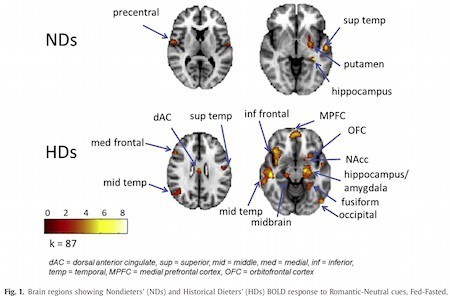Marc Abrahams's Blog, page 309
September 5, 2015
Little Kids versus (slightly bigger) Robots
Researchers in Japan gave children the opportunity to spontaneously abuse robots, and studied what then happened. (Thanks to Scott Langill for bringing this to our attention.) They produced this video and these studies about that:
“Escaping from Children’s Abuse of Social Robots,” Drazen Brscić, Hiroyuki Kidokoro, Yoshitaka Suehiro, and Takayuki Kanda, In Proceedings of the Tenth Annual ACM/IEEE International Conference on Human-Robot Interaction, pp. 59-66. ACM, 2015. The authors report:
Social robots working in public space often stimulate children’s curiosity. However, sometimes children also show abusive behavior toward robots. In our case studies, we observed in many cases that children persistently obstruct the robot’s activity. Some actually abused the robot by saying bad things, and at times even kicking or punching the robot. We developed a statistical model of occurrence of children’s abuse. Using this model together with a simulator of pedestrian behavior, we enabled the robot to predict the possibility of an abuse situation and escape before it happens. We demonstrated that with the model the robot successfully lowered the occurrence of abuse in a real shopping mall.
“Why Do Children Abuse Robots?” Tatsuya Nomura, Takayuki Uratani, Kazutaka Matsumoto, Takayuki Kanda, Hiroyoshi Kidokoro, Yoshitaka Suehiro, and Sachie Yamada, In Proceedings of the Tenth Annual ACM/IEEE International Conference on Human-Robot Interaction Extended Abstracts, pp. 63-64. ACM, 2015. The authors report:
we conducted semistructured interviews with children who bullied a robot. In the research, children’s abusive behaviors toward robots were defined as follows: “Actions interpreted as infringements on roles robots play or human-like characteristics they pose through verbal or behavioral offences toward the robots that are frequently repeated.”
In the study we observed abusive behaviors as follows: Persistently obstruct the locomotion of the robot. Use of abusive language. Further, we observed serious abusive behaviors with physical contact such as kicking, punching, beating, folding arms, and moving (bending) the joints of robot’s arm and head.
Kate Darling wrote a nice essay (in IEEE Spectrum) about all this.
BONUS: Video of American football players tackling a robot, at Dartmouth College:

September 4, 2015
It Can Be Difficult to Separate Boys From Their Toys
This medical case report explains how difficult it can be to separate an adult man from a treasured toy:
“Removal of a sex toy under general anaesthesia using a bimanual-technique and Magill’s forceps: A case report,” Obinna Obinwa, Ian Robertson, and Maurice Stokes, International Journal of Surgery Case Reports, vol. 15, 2015, pp. 96-98. The authors, at Mater Misericordiae University Hospital [pictured here], Eccles Street, Dublin, Ireland, report:
“A 68-year-old man presented to the emergency department with severe lower abdominal discomfort, distension and inability to pass urine, flatus or bowel motions. He had inserted a phallic object in the rectum 10 hours prior to presentation and had been unable to remove same….
“The method of removal of phallic objects varies from one individual case to another. In the presence of obstruction, a quick decision must be made for removal under general anaesthesia and the patient will also need to be consented for laparotomy. Previous literature described a “cork-in-bottle” technique using myomectomy screws [pictured below] as well as use of single-incision laparoscopic surgery (SILS) ports for removal of phallic objects….
“Extraction of phallic objects requires ingenuity. We describe another minimally invasive technique of removal that adds to the literature, thereby limiting the need for laparotomy and open removal of foreign bodies.”
Ivan Oransky, writing in Medpage Today, scrutinizes the matter.
Here, for reference, is a photo of a myomectomy screw:

fMRI and Forrest Gump Open Science
“The human brain is designed to process vast amounts of input that are continuously gathered through the senses. However, most experiments study the brain via simplified stimuli that do not resemble the complexity of a natural environment — a mismatch that needs to be addressed in order to better understand how the brain works.”
What can be done to address this mismatch? Think: fMRI + Think: Forrest Gump. The two are brought together in a unique open-science data project organised by the Psychoinformatics Lab at Otto von Guericke University, Magdeburg, Germany – it’s called studyforrest.org. The organisation is in the process of accumulating data centering around a key study which recorded the responses of 20 human subjects who listened to the audio soundtrack of Forrest Gump whilst undergoing continuous 7-Tesla fMRI brainscans.
See: ‘A high-resolution 7-Tesla fMRI dataset from complex natural stimulation with an audio movie’
Studyforrest.org is currently augmenting the publicly available dataset with other studies which, for example, correlate perceived emotional states during the film. (See: Portrayed emotions in the movie “Forrest Gump” ) and, the latest addition: High-resolution 7-Tesla fMRI data on the perception of musical genres
 Note: The authors of the first study provide answers for those who might ask the question “Why Forrest Gump?” rather than, say ‘Solaris’ or ‘Lost in Translation’ or ‘It’s a wonderful life’:
Note: The authors of the first study provide answers for those who might ask the question “Why Forrest Gump?” rather than, say ‘Solaris’ or ‘Lost in Translation’ or ‘It’s a wonderful life’:
“[…] we chose the drama movie “Forrest Gump” as a stimulus (description: “The story depicts several decades in the life of Forrest Gump, a naïve and slow-witted yet athletically prodigious native of Alabama who witnesses, and in some cases influences, some of the defining events of the latter half of the 20th century in the United States.”; Wikipedia). The storyline of this movie is already carried by an off-screen narrator, hence the additional voice-over audio-description can primarily focus on the description of visual scenery and facial expressions without adding differentiating aspects regarding how the story is told. Moreover, the soundtrack of “Forrest Gump” contains several dozen excerpts of contemporary music from the past few decades, thus further enriching the stimulus with a non-speech dimension. Lastly, the story of “Forrest Gump” makes numerous references to events in recent history that participants are likely to have prior knowledge about and, consequently, may engage similar retrieval processes of long-term memory.”
Here are some scenes from “Forrest Gump”:

September 3, 2015
Romance, food, dieting, and fMRI, all in one study
Here’s a scientific study that combines the era’s most irresistible topics — romance, food, and dieting — with the era’s favorite cogno-intellectual expensive electromechanical procedure, fMRI. The study is:
“The way to her heart? Response to romantic cues is dependent on hunger state and dieting history: An fMRI pilot study,” Alice V. Ely, Anna Rose Childress, Kanchana Jagannathan, Michael R. Lowe [pictured here], Appetite, Volume 95, 1 December 2015, Pages 126–131. (Thanks to David Benoit for bringing this to our attention.) The authors, at Drexel University and the University of Pennsylvania, explain:
Participants were instructed not to eat or drink anything apart from water for 8 h prior to their scanning study visit…. After the first block participants consumed chocolate-flavored Ensure® (500 kcal, 12 g of fat, 80 g carbohydrate, 18 g protein)… all participants were scanned first in the fasted state and second in the full state….
Stimuli were shown for 500 ms, in a jittered fashion with an average inter-stimulus interval of 1.5 s…. Romantic cues were… the four most positively rated ‘sexual’ stimuli from female normative data. Though the most highly rated sexual cues for men are typically graphically erotic, these stimuli depicted fully-clothed couples heterosexual couples embracing, holding hands and in other states of romantic intimacy. Neutral cues were a car, stapler, tree and bowling ball.
Here’s further detail — a prettily arranged set of brain images — from the study. The caption on this image says, “Brain regions showing Nondieters’ (NDs) and Historical Dieters’ (HDs) BOLD response to Romantic-Neutral cues, Fed-Fasted”:

More industry meetings choose Ig Nobel Prize winners as keynotes speakers
More and more industry, as well as science, meetings and conventions are inviting Ig Nobel Prize winners to be their keynote speakers. Here’s one of the latest, as reported by Big Rigs, the transport industry newspaper:
Share the stage with industry leaders
From IG Nobel prize for his ground-breaking work on the ‘Sonic crisp’ to multisensory warning signals for drivers; don’t miss the chance to share the stage, and world-leading scientific program of ICTTP2016, with global leaders in the field like gastronomic transport great Professor Charles Spence.
CARRS-Q Senior Research Fellow and ICTTP2016 Co-Chair Dr Kerry Armstrong said abstracts are now invited for the Sixth International Conference on Traffic and Transport Psychology (ICTTP2016), which will profile the latest global research, programs and policy developments when it heads Down Under for the first time next year.
“Professor Spence is the Head of the Crossmodal Research Laboratory at the University of Oxford, and I suspect as a lad he mightn’t have foreseen the path the career has taken.
“He’s well-known for his unusual work designing foods that maximally stimulate the senses, and his investigation into computer interaction issues on the European Space Shuttle.
“However, at ICTTP2016, you’ll hear the latest on his active line of research investigating how our brains process information from our different senses to design better multi-sensory warning interfaces and environments to save lives on our roads of the future.
“We are privileged to present keynote speakers of the scientific standing of Professor Spence…”

September 2, 2015
Ig Nobellian Miller’s new use for 3D printing: Women’s penis size recall
Geoffrey Miller, who shared a 2008 Ig Nobel Prize, for research on lap dancers’ fertility and earning power, continues his relentless pursuit of knowledge. Professor Miller and several colleagues have come up with a new use for 3D printing. They tell all in the new study:
 “Women’s Preferences for Penis Size: A New Research Method Using Selection among 3D Models,” Nicole Prause [pictured here, right], Jaymie Park, Shannon Leung, Geoffrey Miller, PLoS ONE, 10(9), September 2, 2015: e0133079. The authors, at UCLA and the University of New Mexico, explain:
“Women’s Preferences for Penis Size: A New Research Method Using Selection among 3D Models,” Nicole Prause [pictured here, right], Jaymie Park, Shannon Leung, Geoffrey Miller, PLoS ONE, 10(9), September 2, 2015: e0133079. The authors, at UCLA and the University of New Mexico, explain:
Studies of women’s penis size preferences typically have relied on their abstract ratings or selecting amongst 2D, flaccid images. This study used haptic stimuli to allow assessment of women’s size recall accuracy for the first time, as well as examine their preferences for erect penis sizes in different relationship contexts. Women (N = 75) selected amongst 33, 3D models. Women recalled model size accurately using this method, although they made more errors with respect to penis length than circumference. Women preferred a penis of slightly larger circumference and length for one-time (length = 6.4 inches/16.3 cm, circumference = 5.0 inches/12.7 cm) versus long-term (length = 6.3 inches/16.0 cm, circumference = 4.8 inches/12.2 cm) sexual partners. These first estimates of erect penis size preferences using 3D models suggest women accurately recall size and prefer penises only slightly larger than average.
Here’s graphical detail from the study:
Here’s graphic detail from the study:
During the inspection, she was asked not to measure the model using any objects in the room, but no instruction was provided regarding how she used her own hands. Then, the experimenter left for 30 seconds (without observing the participant’s inspection process), returned, took the test model from the participant and out of the testing room, and asked the participant to select which penis model (from the 33 described above) was most similar in size to the test model she just handled. The participant recorded the letter code from the bottom of that model into the computer.
The 2008 Ig Nobel Prize for economics was awarded to Geoffrey Miller [pictured below, holding an object in one hand], Joshua Tybur and Brent Jordan of the University of New Mexico, for discovering that professional lap dancers earn higher tips when they are ovulating. Their prize-winning study is: “Ovulatory Cycle Effects on Tip Earnings by Lap Dancers: Economic Evidence for Human Estrus?” Geoffrey Miller, Joshua M. Tybur, Brent D. Jordan, Evolution and Human Behavior, vol. 28, 2007, pp. 375-81.

How a bicycle balances
There’s still some physics mystery, for many people, about how a bicycle balances.
Bill Steele wrote about the physics of bicycles balancing themselves, for Cornell University’s Ezra magazine.
Nicole Frýbortová demonstrates, in this video, something about how a human rider balances on a bicycle:

Springtime for Hitler : Lessons for Leadership
Even though Hitler may have been a megalomaniac drug-addled psychopathic narcissist, the question can still be asked: “What lessons can we learn from his approach to leadership?” Answers are provided by Professor Hershey H. Friedman (Department of Finance and Business Management, School of Business, Brooklyn College, The City University of New York) and Professor Linda Weiser Friedman (Baruch College Zicklin School of Business and the Graduate Center of the City University of New York) in a 2013 SSRN paper which shares its title with the song in the clip above (from Mel Brooks’ 1968 movie The Producers). The paper can be read in its entirety by clicking this link: ‘Springtime for Hitler: Lessons in Leadership’.
BONUS QUIZ:
Which of the following quotes cited in the paper are from (former) high-ranking blue-chip-corporation execs – and which are Adolf’s?
“Depopulate. Get rid of people. They gum up the works.”
“I believe today that my conduct is in accordance with the will of the Almighty.”
“I’m doing God’s work.”
“The victor will never be asked if he told the truth.”
[answers: in the paper]

Podcast 27: A look back at the 2014 Ig Nobel Prize winners (PART 2)
Defecating magnetically aligned dogs, the relative pain suffered while seeing an ugly painting while being shot in the hand with a powerful laser beam, Italy’s addition of prostitution, treating nosebleeds by stuffing cured pork up the nose, reindeer’s reactions to seeing humans who are disguised as polar bears, and Lactic Acid Bacteria Isolated from Infant Faeces as Potential Probiotic Starter Cultures for Fermented Sausages — all these all turn up in this week’s Improbable Research podcast.
Click on the “Venetian blinds” icon — at the lower right corner here — to select whichever week’s episode you want to hear:
SUBSCRIBE on Play.it, iTunes, or Spotify to get a new episode every week, free.
This week, Marc Abrahams tells about:
The 2014 Ig Nobel Prize winners – PART 2. (List of the 2014 Ig Nobel Prize winners, with links to their research. Featuring a dramatic reading by Daniel Rosenberg.) Here’s a Reuters photo from the on-stage demonstration, at the 2014 Ig Nobel Prize ceremony, of the prize-winning method of treating “uncontrollable” nosebleeds by using the method of pork-up-the-nose:

The 25th First Annual Ig Nobel Prize ceremony (and webcast).
The mysterious John Schedler perhaps did the sound engineering this week.
The Improbable Research podcast is all about research that makes people LAUGH, then THINK — real research, about anything and everything, from everywhere —research that may be good or bad, important or trivial, valuable or worthless. CBS distributes it, both on the new CBS Play.it web site, and on iTunes and Spotify).

September 1, 2015
Congratulations: The Duck Guy will become the museum director
Congratulations to Kees Moeliker, “the duck guy”, who on December 1 will become director of the Natuurhistorisch Museum Rotterdam, where he is currently curator. Congratulations also to Jelle Reumer, the museum’s current director, who has become a full professor at Utrecht University.
Kees was awarded the 2003 Ig Nobel Prize for biology, for documenting the first scientifically recorded case of homosexual necrophilia in the mallard duck. Kees is also Improbable Research’s European Bureau Chief. Here, in case you have not seen it, is Kees’s TED Talk about the duck:
BONUS: An interview in de Volkskrant.

Marc Abrahams's Blog
- Marc Abrahams's profile
- 14 followers









